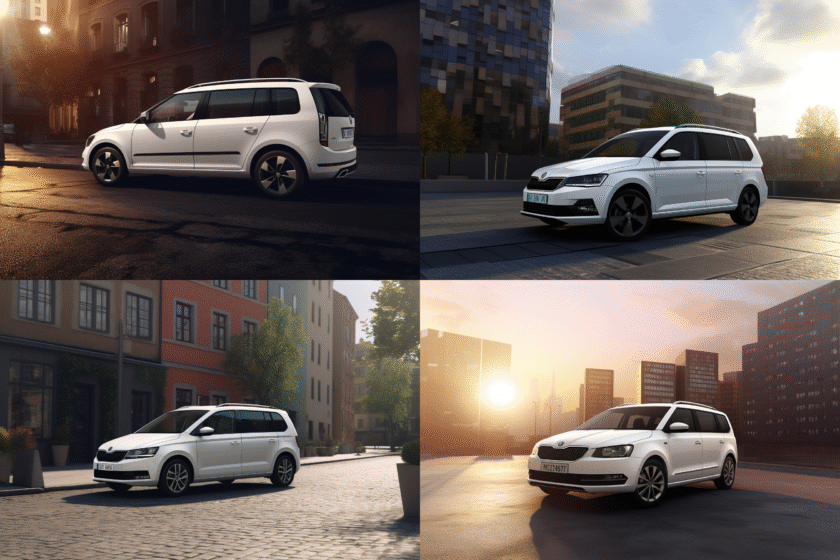
The Škoda Roomster debuted in 2006 as a compact MPV, combining the practicality of a minivan with the style of a modern hatchback. The main goal was to create a “versatile family car” — spacious, flexible interior, large cargo space, but still stylish and contemporary.
Roomster’s design was unusual for Škoda: high roofline, short hood, and large windows gave it a light, airy look. The rear seats could fold and slide, allowing the cargo area to expand nearly to small van proportions.
It was offered with petrol and diesel engines, with front-wheel drive or all-wheel drive depending on the market. In 2010, Roomster received a minor facelift, and production ended in 2015, making way for Škoda’s compact crossover lineup.
Today, Roomster is remembered as a practical yet unconventional car, perfectly blending style, comfort, and functionality in a compact package.

Škoda Roomster (2006–2015) Engine: 1.2–1.6 L, petrol/diesel, 64–105 hp Drive: Front-wheel drive (FWD), some AWD versions Transmission: 5-speed manual / 6-speed automatic 0–100 km/h: ≈11–14 s (depends on engine) Top Speed: ~160–180 km/h Dimensions: 4220 × 1699 × 1630 mm Wheelbase: 2612 mm Weight: ≈1150–1350 kg Body: 5-door compact MPV Special Features: Flexible rear seats, large cargo space, panoramic roof (optional), modern family-friendly design
New skoda roomster
The new Skoda Roomster has the simplest possible design. Which is inherent in many of today’s Skodas. However, AI also presented a more futuristic version of the Skoda Roomster 2025, which is futuristic and moderately sporty. This is how, in my opinion, new concepts from Skoda should look. Of its special features, we can highlight the fact that it has completely lost its hood and has become similar to the Hyundai Staria, which gives the new Roomster a unique charm. The design of the futuristic Roomster also makes us understand that it is most likely an electric vehicle, which adds even more modernity.
Future Classics: 6/10
Brand Recognition: 9/10
Design Modernity: 7/10
CarsCorn Score: 7.3/10




